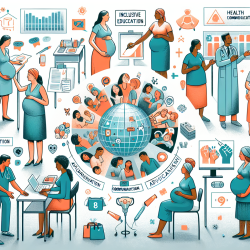In the ever-evolving field of speech-language pathology, staying updated with the latest research and incorporating data-driven decisions is paramount to creating successful outcomes for children. A fascinating study titled "Vaccine Safety" (Offit et al., 2013) offers valuable insights that can be implemented to enhance our practices. While the study primarily focuses on vaccine safety, its methodologies and findings can be adapted to improve our approach to speech-language therapy, particularly in an online setting like TinyEYE.
Key Insights from Vaccine Safety Research
The research highlights the rigorous processes involved in ensuring vaccine safety, from prelicensure trials to postlicensure surveillance. These processes emphasize the importance of continuous monitoring and data collection to identify and mitigate risks. As practitioners, we can draw parallels to our field, particularly in the following areas:
1. Pre-Therapy Assessments
Just as vaccines undergo extensive prelicensure evaluations, it is crucial to conduct thorough assessments before initiating therapy. Utilize standardized assessment tools to gather comprehensive data on each child's speech and language abilities. This data-driven approach ensures that therapy plans are tailored to meet individual needs effectively.
2. Continuous Monitoring and Data Collection
The study underscores the significance of ongoing surveillance in vaccine safety. Similarly, continuous monitoring of a child's progress is essential in speech-language therapy. Implement regular check-ins and use data collection tools to track improvements and identify areas that need adjustment. This proactive approach helps in making informed decisions and modifying therapy plans as needed.
3. Parental Involvement and Education
Vaccine safety research highlights the role of public education in ensuring vaccine uptake. In speech-language pathology, educating parents about the therapy process, expected outcomes, and ways to support their child's progress at home is equally important. Providing parents with data-driven insights into their child's progress can enhance their involvement and commitment to the therapy process.
4. Utilizing Technology for Better Outcomes
The research showcases the use of advanced technologies in monitoring vaccine safety. At TinyEYE, leveraging technology can significantly improve therapy outcomes. Use online platforms to deliver therapy sessions, track progress, and communicate with parents. Data analytics tools can help in identifying patterns and making evidence-based decisions to optimize therapy plans.
Encouraging Further Research and Implementation
While the vaccine safety study provides a robust framework, it also encourages practitioners to engage in continuous research and stay updated with the latest findings. Here are a few ways to foster a research-oriented mindset:
- Stay Informed: Regularly review recent studies and publications in speech-language pathology and related fields.
- Collaborate: Engage with other professionals and researchers to share insights and best practices.
- Innovate: Be open to incorporating new technologies and methodologies into your practice.
- Evaluate: Continuously assess the effectiveness of your therapy plans and make data-driven adjustments.
By adopting these strategies, we can ensure that our practices are not only effective but also grounded in the latest research, ultimately leading to better outcomes for the children we serve.
To read the original research paper, please follow this link: Vaccine safety.










